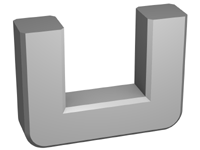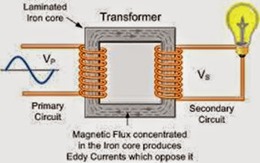What are losses in the transformer
Category: Electrical Articles
9 Mar 18
Losses in transformer
An ideal transformer has no energy losses i.e zero losses and 100% efficient. but in real (In practical) transformers, energy is dissipated in the windings, core, and surrounding structures. Larger transformers are generally more efficient, and those of distribution transformer usually perform better than 98%.
employ copper conductors to produce the magnetic field in steel core so transformer losses include both core losses and copper losses.
Copper losses:
- Copper losses occur same as in distribution line and are lesser in quantity as compared to core losses.
- Copper losses are nothing but dissipated heat by the current in primary as well as secondary winding which can find out by the current square relation with resistance as discussed earlier which can be observed.
- Any factors affecting current and winding resistance obviously affects copper loss in the transformer.
- Increase in real or reactive loading causes more flow of current hence more copper losses.
- The resistance of winding depends upon length and size of winding conductors. This has an important contribution in amounts to an amount of copper loss in the transformer.
- Change in temperature of the winding causes changes in resistivity of the winding conductor hence overall resistance hence copper losses of the transformer.
Core losses:
- Core losses account much more than copper losses in a transformer in magnitude.
- Power, as well as distribution transformer, are permanently stay connected in the system soon load losses are essential to be considered core are independent of loading.
Core losses are a function of
- Type of lamination
- A material of the core
- Insulation
- voltage
- frequency
Harmonic losses:
- Presence of harmonics in the system can increase losses in the transformer.
- The high-frequency voltage may lead to large core losses in the transformer however it hardly affects copper loss.
- Greater losses due to the occurrence of skin effect in larger conductors with high-frequency harmonics.





